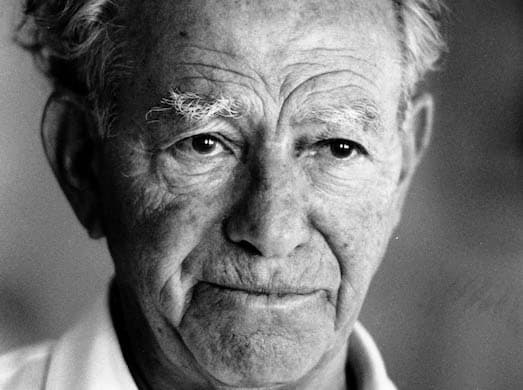Somewhere, You’ll Find the Works of Yip Harburg This Week
That would be Jazz at Lincoln Center’s Rose Hall, where the lyricist and librettist behind ‘The Wizard of Oz’ and ‘Finian’s Rainbow’ will be celebrated by about two dozen singers and musicians.

“Why are there so many songs about rainbows?” That’s how Kermit the Frog opens “The Muppet Movie” (1979), with the words of contemporary singer-songwriter Paul Williams. That question may be aimed directly at Edgar “Yip” Harburg, the legendary lyricist and librettist who places rainbows near the start of two of the most beloved musicals of all time, “The Wizard of Oz” (1939) and “Finian’s Rainbow” (1947).
Why, indeed? This Wednesday at Jazz at Lincoln Center’s Rose Hall, roughly two dozen singers and musicians, shepherded by masters of ceremonies Andrea Marcovicci and Jeff Harnar, will try to come up with an answer. “Look to the Rainbow: The Lyrics of Yip Harburg” will be the opening night of the 33rd Mabel Mercer Foundation Annual Cabaret Convention.
It made sense that Yip Harburg (1896-1981), more than any other songwriter or poet or playwright, was the man who made us believe in the magic of rainbows — and more. He also told remarkably credible stories about witches and wizards, leprechauns and magic spells, enchanted dolls and genies.
If Yip Harburg was the most whimsical of the major lyricists who created the Great American Songbook and modern musical theater — along with Lorenz Hart, Cole Porter, Oscar Hammerstein, Johnny Mercer, and his bestie, Ira Gershwin — he was also, paradoxically, the most down to earth.
Over the course of a career that lasted fully 50 years, Harburg often looked to one particular rainbow: the cause of civil rights and social justice for all. He was at once a great cynic and an overwhelming optimist, a card-carrying realist who also held a deep belief in the power of fantasy not only to entertain but to educate and enlighten.
He was born Isidore Hochberg on the Lower East Side of Manhattan. As an adult, he Americanized his name to Edgar Harburg, but he was always known as “Yip.” His own story was that this derived from the Yiddish word for squirrel, though some scholars have claimed he was actually inspired by the acronym for the Young People’s Socialist League.
Both accounts could be true: He had the cunning, the fast moves, and the restless energy of a squirrel, and was also enough of a social firebrand to give himself the name of a highly controversial political organization.
Harburg got started in music and theater somewhat later than his colleagues, he said, because he had the responsibility of supporting his family (especially after the death of his older brother) rather than playing the role of an aspiring artist. He spent the 1930s perfecting his art, writing mostly for revues — one of which introduced his depression anthem “Brother, Can You Spare a Dime?” — and laying the foundation for the work to come.
His first full-length show with composer Harold Arlen, “Life Begins at 8:40” (1934), also introduced him to Ray Bolger and Bert Lahr, all four of whom would be power players in “The Wizard of Oz.”
Producer Arthur Freed hired the two songwriters for the “Oz” project after seeing their “Hooray For What.” That 1937 Broadway show had a plot that was pure Harburg, combining whimsy with razor sharp cultural commentary. As such, it anticipated elements of “Finian’s Rainbow” as well as “Flahooley,” a 1951 musical fable set against the backdrop of the toy industry and the atom bomb. Along the way, he and Arlen also gave us “Bloomer Girl,” a thoroughly revivable 1944 show that pushed the envelopes of racial and gender equality, not to mention lingerie.
Yip could be ferociously dogmatic; Burton Lane, his collaborator on “Finian’s Rainbow,” told me that the only way they could finish that show together was by never speaking to each other. Harburg’s uncompromisingly anti-segregation messaging put him on the right side of history but tragically landed him on the blacklist during the McCarthy era, thus derailing his career for much of the decade.
His last successful show was “Jamaica” (1957), the first-ever Broadway musical centered around an interacial couple, played by Lena Horne and Ricardo Montalbán. For the rest of his life, Yip Harburg kept on reaching for that rainbow; whether he actually ever got there is questionable. As the concert on Wednesday will doubtless underscore, though, we’re all the beneficiaries of his journey.

